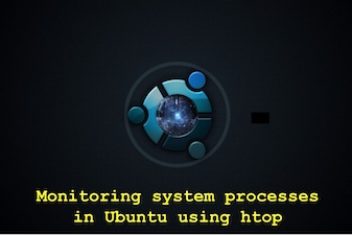In the dynamic landscape of Software as a Service (SaaS) development, the imperative to fortify security measures has never been more pronounced.
Central to this mandate is the practice of threat modeling – a methodical and proactive approach aimed at systematically identifying, prioritizing, and neutralizing potential threats and vulnerabilities within a system. This article delves into the critical domain of threat modeling as it pertains to SaaS development, elucidating the essential steps and considerations necessary for the identification and mitigation of risks.

Source: https://unsplash.com/photos/man-using-macbook-Lks7vei-eAg
Grasping the Essence of Threat Modeling in SaaS Development
The process of threat modeling unfolds through a sequence of pivotal steps, each contributing to a holistic understanding and fortification of the security landscape:
- Defining the System: A foundational step involves articulating a comprehensive definition of the SaaS application, delineating its architectural facets, data flows, and constituent entities, such as users, servers, and third-party integrations.
- Identifying Assets and Data Flows: Critical to this methodology is the meticulous identification of assets integral to the SaaS application – be it user data, authentication systems, or financial information. Concurrently, mapping out data flows is essential for comprehending the nuanced trajectories of information within the system.
- Identifying Threats: A systematic scrutiny ensues to identify potential threats and vulnerabilities. This evaluation spans both technical and non-technical realms, encompassing considerations such as social engineering and insider threats. So securing your SaaS application demands a meticulous approach to threat modeling. Consider partnering with skilled SaaS developers to fortify your defenses and navigate the intricate landscape of cybersecurity at https://lemon.io/hire-saas-developers/.
- Assessing Impact and Likelihood: Evaluating the potential impact of each identified threat is coupled with an assessment of its likelihood. Factors influencing these determinations include extant security controls and the broader threat landscape.
- Prioritizing Threats: A judicious prioritization of threats is integral, guided by considerations of severity, potential impact, and likelihood. This hierarchical arrangement facilitates resource allocation, enabling a focused approach to addressing the most critical risks first.
- Mitigation Strategies: Armed with a comprehensive threat landscape, the development team formulates and executes mitigation strategies for each prioritized threat. This may entail architectural adjustments, the incorporation of security controls, or the adoption of specific coding practices.
Read: What Are the Most Common Cybersecurity Threats Your Business Might Encounter
Pervasive Threats in SaaS Development
While the specific threats may vary contingent on the nature of the SaaS application, several pervasive threats merit consideration:
- Data Breaches: Unauthorized access to sensitive user data stands as a preeminent concern. Threat modeling illuminates potential ingress points, steering the formulation of strategies to fortify data storage and transmission.
- Authentication and Authorization Issues: Weaknesses in authentication and authorization mechanisms can lead to unauthorized access. Threat modeling identifies potential flaws, steering the implementation of robust access controls.
- Insecure APIs: The reliance of SaaS applications on APIs for external service communication underscores the necessity of a secure API ecosystem. Threat modeling ensures the evaluation and fortification of these interfaces.
- Insufficient Data Validation: Inadequate data validation poses a vulnerability gateway. Threat modeling discerns areas where validation is lacking, guiding the incorporation of rigorous validation mechanisms.
- Supply Chain Risks: Third-party integrations and dependencies introduce vulnerabilities. Threat modeling evaluates the security of these external components, steering the implementation of measures to mitigate supply chain risks.
Benefits Enshrined in Threat Modeling for SaaS Development
- Early Risk Identification: The potency of threat modeling is most manifest in its application during the embryonic stages of development. Identifying risks at the design phase facilitates cost-effective and timely mitigation.
- Resource Optimization: Prioritizing threats ensures judicious resource allocation, directing efforts toward the mitigation of the most critical risks. This approach optimizes developmental endeavors.
- Fortified Security Posture: Threat modeling bequeaths a more resilient security posture to SaaS applications. Proactively addressing potential vulnerabilities diminishes the likelihood of security incidents and data breaches.
- Regulatory Compliance: Many industries are subject to stringent data protection regulations. Threat modeling aids in the identification and remediation of potential risks, aligning SaaS applications with regulatory frameworks.
- Enhanced Communication: Threat modeling fosters collaboration among developers, security professionals, and stakeholders. It cultivates a shared understanding of risks and the measures instituted to mitigate them.
Read: AI and Cybersecurity: How Machine Learning is Revolutionizing Threat Detection
Conclusion
In conclusion, threat modeling emerges as an indispensable practice in SaaS development, delineating a structured and proactive methodology for the identification and mitigation of potential risks. As SaaS continues its evolution, threat modeling stands as a strategic investment, safeguarding the confidentiality, integrity, and availability of user data and critical functionalities. Its adoption not only fortifies security measures but also serves as a testament to a commitment to user trust and stakeholder assurance in an increasingly interconnected digital landscape.
If you like the content, we would appreciate your support by buying us a coffee. Thank you so much for your visit and support.



